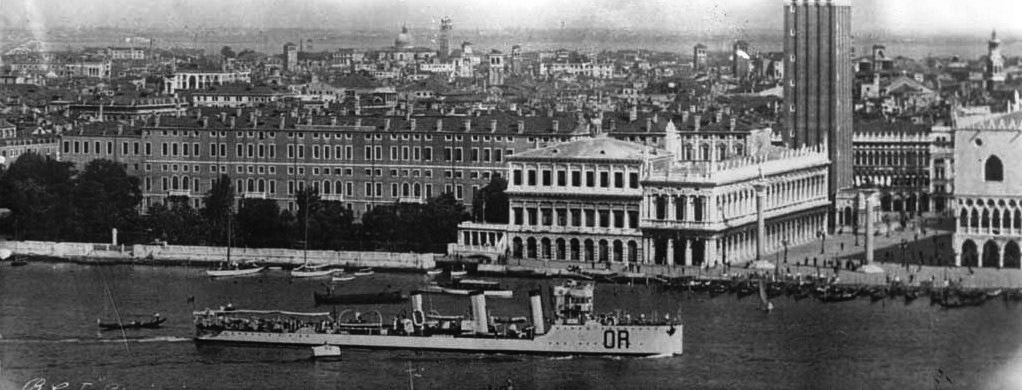
 Regia Marina – 4 destroyers:
Regia Marina – 4 destroyers:Giuseppe Sirtori, Giovanni Acerbi, Vincenzo Giordano Orsini, Francesco Stocco 1917-1944
WW2 Italian Destroyers
Poerio | Aquila | Mirabello | Leone | Sella | Sauro | Turbine | Navigatori | Freccia | Folgore | Maestrale | Oriani | Soldati | Medaglie d’OroWW2 Italian Torpedo Boats
Indomito | Audace | Audace(ii) | Pilo | Sirtori | La Masa | Generali | Palestro | Curtatone | Albatros | Spica | Pegaso | Ciclone | ArieteThe Giuseppe Sirtori class destroyers were four, built for the Italian Regia Marina during World War I by Odero, Sestri ponente Shipyards, and an improved version of the Pilo class. They saw action both during the first world war, but also survived long enough to be still active as torpedo boats during the second world war, all lost in action at the time. They were succeeded by the relatively close La Masa class. #ww1 #ww2 #regiamarina #destroyers #cacciatorpediniere #odero
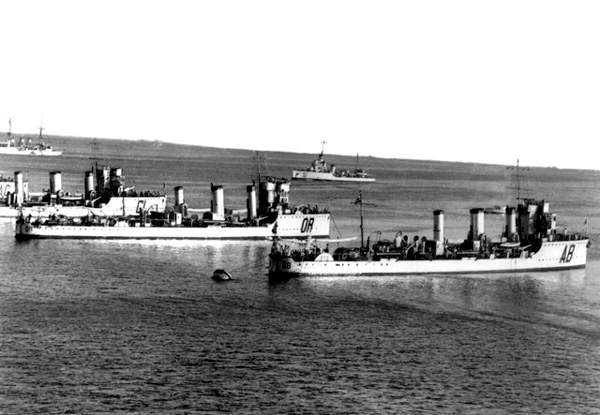
Development
The Sirtori class destroyers were very much a continuation of the “tre pipe” standard, by another yard, Odero in Sestri Ponente (Cantieri navali Odero) in Genoa. They were a follow-up of the Pilo class launched in 1915 both at the same Yard, and at Pattison in Naples. The admiralty wanted to test an increase in armament, and so they were given a higher caliber gun armament with six 4-in guns instead of the now considered weak 3-in/40 but also twin torpedo tubes banks in side mountings. Further modifications were done postwar. All four ships, Giuseppe Sirtori (Pennant “SR”), Giovanni Acerbi (AC), Vincenzo Giordano Orsini (OR) and Francesco Stocco (ST) were ordered to Odero in 1915, laid down for the first on 2 February 1916, launched on 24 November 1916 and completed and commissioned on 22 December 1916. Her sister Giovanni Acerbi was launched on 14 February 1917. Laying down and completion dates unknown.
Design of the class
Hull and general design
The ships of the Giuseppe Sirtori class differed from the Pilo class by being slightly larger at 790t versus 770t with modern assessemnts giving them 709 tonnes (698 long tons) standard up to 914 t (900 long tons) fullly loaded. While in size, they measured 72.5 m (237 ft 10 in) long at the waterline, 73.54 metres (241 ft 3 in) long overall versus 72.5/73 meters for the Pilo class, with a beam of 7.34 metres (24 ft 1 in) versus 7.3 so about the same, plus a mean draft of 2.7 metres (8 ft 10 in) versus 2.72 meters, so again, same hull overall, for a crew of 98 officers and enlisted men.
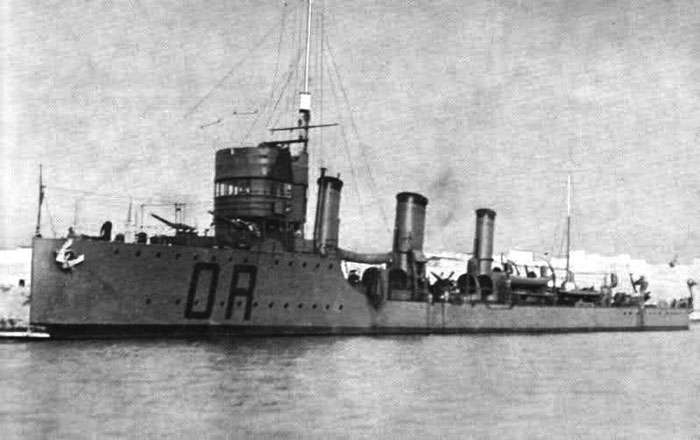
The design respectied also the exact shcheme of previous boats with the same forecastle/main deck ratio of roughly 1/4, taller mainmast, lower aft mast, three narrow, tall funnels all raked amidship, a small bridge, but there were differences in armament and location of the torpedo tubes (see below). Their hull was almost rectangular with almost no bow flare, and for the first time, and inverted bow, longer at the waterline. Not a ram, but the bow chin was slightly beefier. There were only portholes in the living quarters fore and aft. The amidship section where the mchinery only had electric lighting on its single deck. The construction was robust, with thick bulkheads that played their part well at least on one instance, with a ship hitting a mine, broke in two, but both halves stay afloat and were towed to port to be repaired. Fore reasons of space they had no utility boats underdavits but instead simple rafts, usually stacked behind the forefunnel.
Powerplant
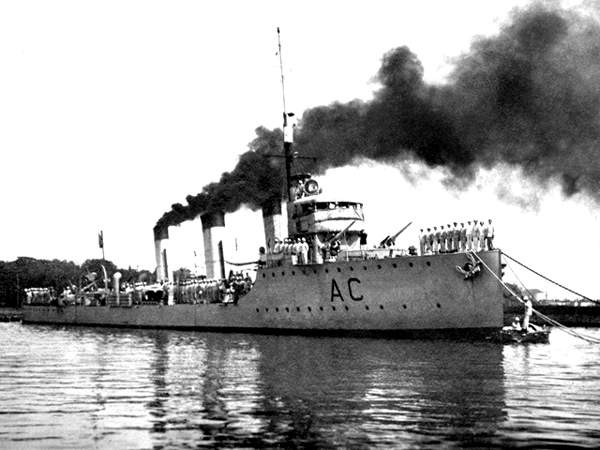
The Sirtori class were had two Tosi steam turbines fed by the steam produced by four Thornycroft water-tube boilers. The powerplant was rated overall to produce 15,500 shaft horsepower (11,558 kW) versus 17,000 shp for the Pilo class, so very comparable, and a top speed of 30 knots (56 km/h; 35 mph), versus 33.8 knots, for the previous Odero Pilo boats, whereas the less powerful pattison boats were rated for 14.800 shp for 30.4 knots. In in service they reached 33.6 knots (62.2 km/h; 38.7 mph), even more on trials, based on a maximum of 17,000 shp (12,677 kW) like the Pilo class. At economical speed (15 knots, 28 km/h/17 mph they still could cover 1,700 nautical miles (3,100 km; 2,000 miles).
Armament
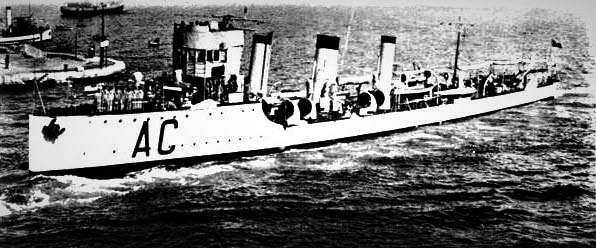
Giuseppe Sirtori was armed with a main battery of six 102 mm (4 in) guns unlike the Pilo class, mixing four 3-inches and two 3-inches AA guns. This uniform battery still had relatively high angle mountings, but was far more capable to deal with Austro-Hungarian destroyers. The light armament comprised two 40 mm (1.6 in) Ansaldo anti-aircraft guns, basically replicas of Vickers “pom-pom” 2 pounder. In one occasion they were used against land objectives with devastating results. This was rounded up by two 6.5 mm (0.26 in) Breda light machine guns for AA defense, but also usable for land parties. There were also four 450 mm (17.7 in) torpedo tubes like the previous design, but instea dof being stagerred in single mounyts fore and aft, they were concentrated in two twin launchers on either side. Also this could be a cause for concerns in stability, increasing rolling, no such occurence seemed to have been raides. They also could be outfitted with rails and carry 10 naval mines.
4-in/40 Modello 1916
These six 76.2 millimeters (3 inches) guns were installed forward, two on the forecastle, two in echeloned pairs aft of the forecastle on the weather deck, both close to the amidship (largest) funnel.
Mass: 510 kg (1,120 lb)
Length: 3.13 m (10 ft 3 in, barrel 3 m (9 ft 10 in) 40 caliber
Shell: Fixed QF 76.2 x 420mm R 5.6–6.5 kg (12–14 lb), mv 680 m/s (2,200 ft/s)
Elevation: AA variant +81°, traverse 360°
Rate of fire: 12-15 rpm
Range: 10.7 km (6.6 mi) +40° effective, 5.8 km (19,000 ft) +70°, 4.8 km (16,000 ft) AA ceiling
Crew: 7
It had a pedestal mount going from -10° to +65° elevation, and weighed 1,790 kg (3,950 lb) complete.
Performances were the same as the regular mounted 75 mm/40 Modello 1916. This artillery piece was located aft likely, at the poop. They derived from the licenced QF 12 pounder 12 cwt, Armstrong 76/40 Model 1897.
Full weight 1,676 kg, Length overall 3,139 mm barrel alone 3,048 mm
Rifling; 16 grooves left-handed constant, 76.2 mm
Shell 6.016 to 6.820 kg depending on model Muzzle velocity 690 m/s
12-15 rpm, effective range 5,500 m, max 6,000 m
Elevation +75° on the modello 1917 and 1918.
2-in/39 Modello 1916
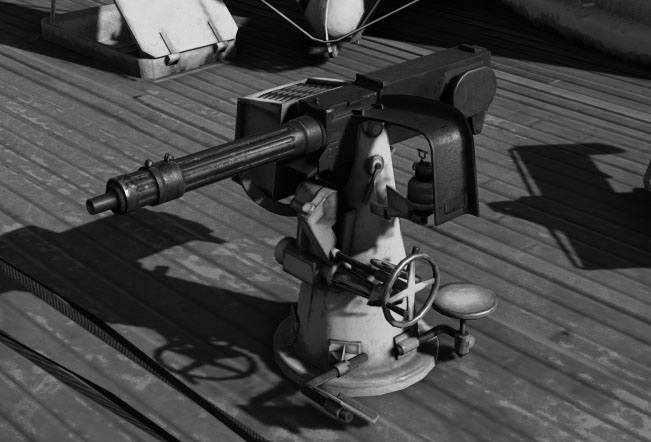
The 40 mm/39 (1.575″) Vickers-Terni 1915/1917 was the main AA gun onboard and pretty good at its job. Derived from the British “pompom”, the two mounts were located close to the aft mast, one either side.
Weight: 550 lbs. (249 kg) including cooling water
Gun Length: oa 96.0 in (2.438 m), barrel 62.0 in (1.575 m)
Rate Of Fire: 200 rpm cyclical, 50-75 rpm practical
Cannone da 102/45 Schneider-Armstrong Modello 1917
Replacing former guns in 1920. Still used in WW2, but in 1942, two were landed to install two depth charge racks at the poop.
The Schneider-Armstrong Model 1917 weighted 4,600 kg and had a -5°/+35° elevation, first installed on the Generali-class, Palestro-class, La Masa class, and Giuseppe Sirtori.
Mass: 2,327 kilograms (5,130 lb)
Length: 4.7 meters (15 ft 5 in), barrel 4.57 meters (15 ft)
Shell: 13.7–16 kilograms (30–35 lb)
Breech: Horizontal or vertical sliding breech block
Rate of fire: 7 rpm
Muzzle velocity: 850 m/s (2,800 ft/s)
Range: 15,000 m (9.3 mi) at +35° and 8,000 m at max elevation (26,000 ft) with the DP mount.
Torpedoes
The 17.7 inches torpedo tubes (450 mm) used at the time, Thornycroft models built in Italy, by Silurificio Italiano.
No sufficient data on these. 1935 models were rated to reach 3,000 nm at 44 knots. There were four tubes in twin banks, one per side amidships, and stagerred. The aftermost pair, port side, was close to the 3rd funnel, turned forward, and the amidship bank starboard was between the second and third funnel.
Mines
The ships carried also 10 mines as well during wartime. These could be Vickers Elia (VE) 1,676 lbs. (760 kg), 320 lbs. (145 kg) WH, or one of the Sautter-Harlé types M1916 154 or 220 ib.
Upgrades
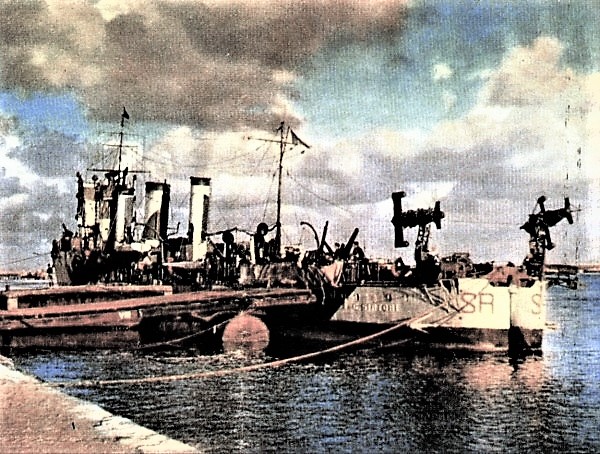
In 1920 Giuseppe Sirtori was the first to be comprehensively overhauled and underwent modifications. Her six Cannone da 102/35 Modello 1914 102-millimetre were replaced by Cannone da 102/45 Schneider-Armstrong Modello 1917 of the same caliber. They had better caracteristic and range overall, while being faster. So in 1920 they swapped their main armament for 102mm/45 Schneider-Armstrong 1917 and by 1942, Giuseppe Sirtori and Francesco Stocco saw the removal of two main guns for the installation of two 2 DCT. It seems they received no modern AA.
⚙ Base design, Odero. |
|
| Displacement | 912t-770t |
| Dimensions | 73m x 7.3m x 2.3m (240ft x 24ft x 7ft 7in) |
| Propulsion | 2-shaft Tosi turbines, 4 Thornycroft boilers, 16,000 (20,000 KW) |
| Speed | 30kts (56 km/h; 35 mph) |
| Range | c1200nm/14kts, 500nm/25kts, 350nm/30kts |
| Armament | 4x 3in/40, 2x 3in/30 AA, 4x 17.7in (450mm) TTs, 10 mines |
| Crew | 4-5 officers, 69-79 ratings |
Read More/Src
Books
Brescia, Maurizio (2012). Mussolini’s Navy: A Reference Guide to the Regina Marina 1930–45. NIP
Campbell, John (1985). Naval Weapons of World War Two. NIP
Fraccaroli, Aldo (1970). Italian Warships of World War 1. London: Ian Allan.
Fraccaroli, Aldo (1968). Italian Warships of World War II. Shepperton, UK: Ian Allan.
Fraccaroli, Aldo (1985). “Italy”. In Gray, Randal (ed.). Conway’s All the World’s Fighting Ships 1906–1921.
Friedman, Norman (2011). Naval Weapons of World War One: Guns, Torpedoes, Mines and ASW Weapons of All Nations; An Illustrated Directory. Barnsley
McMurtrie, Francis E., ed. (1937). Jane’s Fighting Ships 1937. London: Sampson Low.
Roberts, John (1980). “Italy”. In Chesneau, Roger (ed.). Conway’s All the World’s Fighting Ships 1922–1946.
Rohwer, Jürgen (2005). Chronology of the War at Sea 1939–1945: The Naval History of World War Two (Third Revised ed.). NIP
Whitley, M. J. (1988). Destroyers of World War 2: An International Encyclopedia. NIP
Links
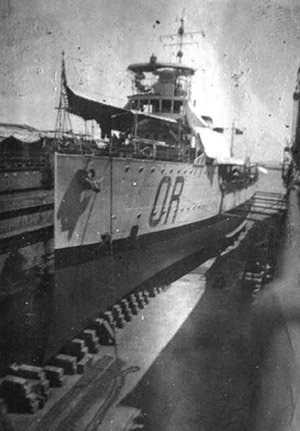
on dreadnoughtproject.org
trentoincina.it Sirtori
trentoincina.it/ Acerbi
trentoincina.it Orsini
trentoincina.it/ Stocco
navypedia.org/
navweaps.com/ 2pounder
it.wikipedia.org/ Classe_Giuseppe_Sirtori
Videos
Nope
Model Kits
3D
Not found
Gallery
 Giuseppe Sirtori (SR)
Giuseppe Sirtori (SR)
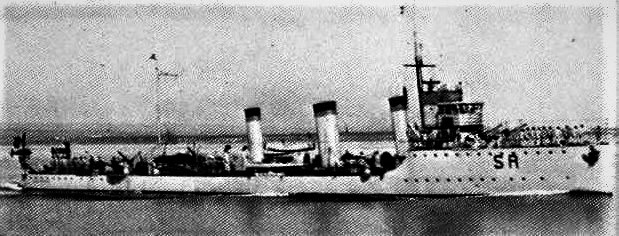
First operation was n the night of 13–14 August 1917 as she left Venice with her squadron (Stocco, Acerbi, Orsini) and another squadron led by Animoso and the section made by Carabiniere and Pontiere, all to intercept an Austro-Hungarian raid party (destroyers Dinara, Reka, Sharfschutze, Streiter, Velebit, six torpedo boats) supporting an air raid by 32 aircraft against Venice’s fortress. They claimed the San Giovanni e Paolo Hospital, killing 14, injuring 30. Only Orsini caught up, having a fleeting contact but they escaped.
On 28 November 1917, another Austro-Hungarian raiding force (Dinara, Huszar, Reka, Streiter, Dikla, Triglav, TB 78, TB 79, TB 86, TB 90) attacked the coast and split up, one attacking first Porto Corsini and else Rimini, Dinara, Reka, Triglav shelling a railway near the mouth of the Metauro, then retiring to Pola. Sirtori, Animoso, Ardente, Audace, Stocco, Acerbi, Abba, Orsini sortied led by the scout cruiser Sparviero, soon joined by Aquila and Ardito and reconnaissance seaplanes, which caught up and attacked without success. Again, the Italians had fold up while at Cape Promontore off Istria, soon covered by the batteries around Pola.
On 10 February 1918 Giuseppe Sirtori sortied with Aquila, Ardente, Ardito, Francesco Stocco, and Giovanni Acerbi as well as MAS 18 to Porto Levante, to support a venture to the harbor at Bakar (Buccari) by MAS boats, an operation deemed completely unnecessary. It became the famous Beffa di Buccari (“Bakar mockery”).
There was a major raid planned by Costanzo Ciano against Pola by the small boat Grillo, but each raid was thawrted by events or spotting on 8–9 April, 12–13 April, 6–7 May, 9–10 May, 11–12 May 1918. On 13 March, Sirtori sortied with Animoso, Stocco, Acerbi, Orsini, escorting 9 PN and 10 PN towing MAS 95 and MAS 96 and Grillo from Venice, the MAS boats towing Grillo. The latter made an attempt at 02:18 on 14 March but her attack between 03:16 and 03:18 achieved no success while she was spotted and destroyed. Searchlights then found the MAS boats waiting offshore at 03:35 and 03:40, withdrawing under fire to the destroyers at 05:00. This was the last raid of Grillo, an experimental tracked MTB.
On the night of 1–2 July 1918, Giuseppe Sirtori sallied forth with Audace, Stocco, Acerbi, Orsini, La Masa and Missori for distant support to Climene and Procione as well as 15 OS, 18 OS, 48 OS, 3 PN, 40 PN, 64 PN, 65 PN, and 66 PN. 15 OS, 18 OS, and 3 PN towed dummy landing pontoons to stage a simulated amphibious landing as a diversion for troops in support of an Italian advance. 48 OS, 40 PN, 64 PN, 65 PN, and 66 PN also shelled Austro-Hungarian lines between Cortellazzo and Caorle. Soon Balaton and Csikós, TB 83F and TB 88F left Pola in the evening of 1 July to spport an air raid on Venice and were spotted by a MAS boat which attacked and missed Balaton on 2 July at noon. They were spotted again and a dual opened up with Balaton suffered hits by Sirtori and other destroyers by the covering destroyer force. Audace, La Masa and Missori concentrated on Csikós and the two torpedo boats. The Austrians soon withdrew back to Pola.
The Armistice of Villa Giusti was signed on 3 November 1918, applied the following day on 4 November 1918 and that morning, Giuseppe Sirtori, Francesco Stocco, Giovanni Acerbi, and Vincenzo Giordano Orsini left Venice with the battleship Emanuele Filiberto as flagship (Contrammiraglio Guglielmo Rainer) to take possession of Fiume. Acerbi was detached to enter Volosko (Volosca) and occupy Opatija (Abbazio), while Orsini occupied Lošinj (Lussino). The other three including Sirtoti entered Fiume at 11:30 or 14:00, according to different sources. The Treaty of London assigned Fiume to Croatia however so the arrival of the three ships was a symbolic occupation. They stayed under troops arrived on 17 November. Sirtori also entered Pianosa on 8 November and Volosko on 11 November and Krk (Veglia) just as the armistice entered full effect on 15 November.
In 1920 Giuseppe Sirtori was overhauled and rearmed (see notes).
On 20 August 1923 she took part in the Corfu incident, leaving Taranto with Giuseppe La Masa and the battleships Duilio and Andrea Doria, led by the scout cruiser Augusto Riboty, Generale Achille Papa, Cantore, Chinotto, Prestinari, a minesweeper, and two auxiliary ships to Portolago, Leros (Aegean Sea) and protecting the Italian Dodecanese from Greece.
In 1929 Sirtori, Stocco, Acerbi, Nievo formed the 10th Destroyer Squadron and with the 9th DesRon plus the scout cruiser Brindisi, they formed the Special Division, the same yard in October she was reclassified as a torpedo boat.
In the early 1930s she was based in Taranto, used as TS for Mechanics School Ships Group.
In September 1939 she was in the 6th TB Squadron with Stocco, Missori, and Pilo. In June 1940 she was assigned to escort and ASW patrols and soon deployed to Tripoli.
She covered the “Ernesto” convoy (steamers Aquitania, Castelverde, Ernesto, Nirvo, Nita) with the gunboat Palmaiola from Tripoli to Naples, Italy on the morning of 27 July 1941 alonsgide the destroyers Alpino, Folgore, Fuciliere, and Saetta, cruisers Giuseppe Garibaldi and Raimondo Montecuccoli in distant cover with the destroyers Bersagliere and Granatiere. At 18:15 on the 28th they were joined by Fulmine and at 19:55 on 28 July they were ambushed by HMS Upholder, torpedoing Giuseppe Garibaldi off Sicily. At 20:20 Alpino and Fuciliere were detached to escort the cruiser to Palermo. Sirtori was ordered to reinforce the convoy and arrived on 29 July. At 15:53 the Dutch O 21 ambushed them in the Tyrrhenian Sea, but missiled. The convoy reached Naples on the 30th.
On 17 August 1941 Giuseppe Sirtori left Naples with 3 destroyers and 2 TBs to escort Caffaro, Giulia, Maddalena Odero, Marin Sanudo, Minatitlan, and Nicolò Odero to Tripoli. The same day they were ambushed by O 23 which torpedoed Maddalena Odero south of Lampione. Pegaso took her under tow to Lampedusa escorted by Sirtori she was later beached only to be finished off by a group of Bristol Blenheim. When her ammunition exploded, she destroyed the gunboat Maggiore Macchi alonsgide in assistance. The convoy made it in Tripoli on 19 August.
On 5 December 1941 Giuseppe Sirtori escorted the steamers Tigrai and Vertuno when ambushed HMS Ultimatum east of the Strait of Messina but missed. On 13 December 1941, Giuseppe Sirtori joined the TB Cigno and four MAS to rescue 645 survivors of the light cruisers Alberico da Barbiano and Alberto di Giussano after the Battle of Cape Bon off Cape Bon.
On 5 March 1942 Giuseppe Sirtori sortied with Sebenico, TB San Martino to escorted the steamers Goggiam and Leonardo Palomba from Corfu to Patras. She had an overhaul and modernization, lossing two main gunswhile two depth charge tracks were installed.
On 3 September 1942 she towed the crippled Monti, torpedoed the previous day off Roccella Ionica and beached at Sant’Ilario dello Ionio.
On 17 October 1942, she left Naples with Maestrale and Grecale, TB Giuseppe Dezza to escort the Panuco to Tripoli. They were ambushed by HMS Una north of Catania which missed, but reported them to Allied aircraft so they had to take cover to Taranto on the 20th. Next she was mobilized for thr axis evaluation from Tunisia, and on 13-14 November 1942 she escorted the steamer Savigliano, attacked twice by Allied submarines but survived.
On 16 November 1942 she left Bizerte (Tunisia) with the TB Groppo escorting the steamers Campania and Rhea to Naples. At 17:30 they were ambushed by HMS United north of Cape Bon, which missed. They arrived unscaved to Naples on 17 November.
In 1943 Giuseppe Sirtori was assigned to the 3rd Torpedo Boat Group, Ionian/Lower Adriatic area with Stocco, Abba, Dezza, Missori, and TB Enrico Cosenz.
On 27 June 1943 she escorted with Stocco and the auxiliary cruiser Rovigno the steamers Campidoglio, Milano, and Quirinale from Patras to Brindisi. On 30 June same for Ezilda Croce and Giorgio Brunner from Bari to Corfu and Patras. On 13 July Sirtori escorted Cesco from Bari to Vlorë (Valona) in Albania.
On 8 September 1943, the armistice prompted Germany to launch Operation Achse, forced disarmament of all Italians and occupation. On 13 September, Giuseppe Sirtori and Francesco Stocco sailed to Corfu to support the Italian garrison defending from a German attacks. Corfu wa sbombed and strafed by the Luftwaffe and on 14 September both TBs were attacked by Stukas. One hit Giuseppe Sirtori, and her captain beached her at Potamos. Later refloated, she headed for the Straits of Corfu to be scuttled by explosive charges on 25 September 1943.
 Giovanni Acerbi (AC)
Giovanni Acerbi (AC)

Built between February 1916 and February 1917, Acerbi took part in a night 14-15 May 1917 action in the Strait of Otranto against a double Austro-Hungarian attack on armed fishing boats patrolling the ASW barrier in the Strait of Otranto, with 14 sunk by Saida, Helgoland and Novara jelped by a diversionary action on a convoy to Albania claiming the steamer Carroccio and DD Borea. Pilo, Mosto led by HMS Bristol started first and later Acerbi (Captain Vannutelli) joined HMS Dartmouth as flagship, RadM Admiral Alfredo Acton with DD Simone Schiaffino and the scout Aquila. The two formations later joined together but at 24 knots they sighted Csepel and Balaton. The destroyers and Aquila surfed forward, the cruiser to cut their retreat to Cattaro. The battle started at 8:15, Balaton was hit but the chase stopped short of the coastal batteries. At 9.05, Dartmouth, Bristol, Acerbi, Mosto tried to protect the immobilized scout Aquila from the second Austrian formation, and they retreated to the northwest chased by the Anglo-Italian formation, furing constinuously wit Acerbi firing from 9,500 metres, and passed Bristol to join Dartmouth at the head. Acerbi misinterpreted a signal and moved closer, to within 9,500 metres of the three Austro-Hungarian scouts, just as Novara was immobilised, prepared to be towed. She fired at them, closing to 7,300 metres, but the supporting cruisers were far behind ans she was found alone when Saida, Helgoland and Novara, rained fire on her. She could not close for a torpedo attack and had to fold back.
Also one of gun jammed, so she retreated 10,000-11,000 m for repairs, when subjected by an air attack and being ordered at 11:36 to reunite with the rest of the formation. The chase was abandoned and later the Austrians were joined by the armored cruiser Sankt Georg, Tátra and Warasdinier. The Anglo-Italians were also ambushed en route by U 89 (UC 25 in disguise) which hit Dartmouth, port side, under the bridge. She was abandoned and kept a skeleton crew but managed to arrive in Brindisi.
She took part in the raid of 13-14 August 1917 (see above), as well as of the 29 September, 16 November against SMS Wien and Budapest, of 28 November (contering the Metauro attack). On 10 February 1918 she supported the “Buccari prank”. On 13-14 May she took part in the failed Grill raid on Pola. On 1- 2 July 1918 she took part in the raid on Cortellazzo-Caorle and simulated landing.
On 4 November she escorted the BB Emanuele Filiberto to Fiume. Under command of Lt.Cdr Po, she was detached to occupy Abbazia with a platoon of sailors, with Yugoslavian protests. She departed for Volosca, occupied on 11 November and Lussino to join Orsini.
Lioke the others she was modernized in 1920. In 1929 she was in the same formation with Sirtori and Stocco, Nievo, X Destroyer Squadron, 5th Flotilla, Special Division. On 10 June 1940 she ws based in Massawa, Eritrea and on the morning of 27 June 1940, she sailed with the destroyers Leone and Pantera to rescue the submarine Perla, which ran aground until reversing course when spotted by the cruiser Leander, destroyers Kandahar and Kingston en route to capture Perla. They were halted by air attacks, and Perla was temporarily repaired and towed to Massawa on 20 July.
On 6 or 8 August Acerbi while moored in Massawa wa sbadly damaged by an raid by two British Bristol Blenheim bombers. One hit penetrated in the third funnel and destroyed the engine room. She had 15 killed, c30 wounded and damage was so serious she was considered a total loss. After being towed into a dry dock, stripped of her armament (placed in defensive positions against the british attack), she was likely attacked again by an air raid on April 4, 1941, likely Fairey Swordfish from HMS Eagle and sank in the port, or scuttled close to the fort. This sis till disputed today.
 Vincenzo Giordano Orsini (OS)
Vincenzo Giordano Orsini (OS)

Launched in April 1917 and completed in May 1917 (laid down Feb. 1916), Orsini operated in the Adriatic as squadron leader under command captain Ernesto Burzagli. On the night of 13-14 August 1917 she was part of the action against Austrian destroyer led by Streiter (see above) and she was the only one having a brief and fleeting contact with these before they vanished.
On 29 September under Captain Vaccaneo she led her squadron (Abba, Stocco, Acerbi) with the scout Sparviero and Audace (Ardente, Ardito Sqn.) for a raid by ten 10 Caproni bombers against Pola just as Austro-Hungarian seaplanes attacked Ferrara base, destroying airship M 8 with four DDs and four TBs. Warned of this the formation left the raid and sailed to Rovigno, to ambush the retreating fleet. At 22.03 Sparviero sighted these 2 miles away, and there was a brief evening clash, the battle ended at 22:30 and the two formations lost contact. Both Sparviero and Velebit were damaged. During the retreat of Caporetto, Orsini’s squadron bombarded the Austrian advance.
On 16 November 1917, she was sent to counter the bombardment by SMS Wien and Budapest at Cortellazzo. The destroyers, supported the attack of MAS 13 and 15 and submarines F 11 and F 13, led to the withdrawal of the two battleships.
On November 28, Sirtori and her sqn. plus another, with the scouts Aquila and Sparviero left Venice with seaplanes in reconnaissance, to look for an enemy formation after a coastal raid at the mouth of the Metauro. They had to stop the chase when too close to Pola.
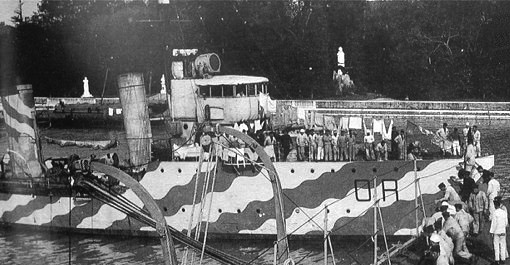
Orsini with camouflage, spring 1918.
On 13-14 May 1918 still as squadron leader she took part in a failed attack with the Grillo against Pola, led under frigate captain Costanzo Ciano and repeated several time, the last on 11-12 May. The one of 13 May saw Grillo entering the port but had no hit and was destroyed. On 1-2 July 1918, Orsini under Domenico Cavagnari with Acerbi, Sirtori, Stocco, Missori, La Masa and Audace escorted seven torpedo boats for the raid on railways between Cortellazzo and Caorle and a diversion landing. They clashed with the DDs Csikós and Balaton, TB 83F and TB 88F already attacked by a MAS. Balaton and Stocco were damaged. They reterated to Brindisi.
On 4 November 1918, Orsini, Acerbi, Sirtori and Stocco left Venice with BB Emanuele Filiberto to Fiume. Orsini captured the island of Lussino There were significant problems from the very beginning: first there was a protest from a Croatian officer previously enlisted in the k.u.k. Kriegsmarine, then a former Austro-Hungarian torpedo boat, the TB 82, which had become Yugoslavian, arrived in port; on land, on 5 November, the Croatian component tried to raise the Yugoslavian flag alongside the Italian one (it was the commander of the TB 82 who raised this flag on the fort on the island, and the next day, 6 November, the sailors also raised one in their barracks[7]) to declare Yugoslavia’s sovereignty over Lussino, under protests from the Croatian clergy. On 8 November she was joined by Acerbi, and they proceded to the evacuation and disarmament of the forts and transfer to Fiume of all the Yugoslavian soldiers, confiscation of armament.
She made another mission from Venice to Fiume post-armistice.
On 2 February 1920 she escorted the transport Città di Roma with provisions and ammunition until captured by D’Annunzio’s legionaries, brought into Fiume.
She was overhaul in 1920. On 1 October 1929 she was reclassed as torpedo boat and in 1931, transported Omar al-Mukhtar from Bardia to Benghazi after captured for his trial. Later she was based in Taranto as TS (Mechanics).
In 1934, she was deployed in Libya and on 3 June 1940, was posted in East Africa, met the Australian light cruiser HMAS Hobart in the southern Red Sea soon before the declaration of war.
On 10 June Orsini and Acerbi were in Massawa, Eritrea under Command of Lt. Giulio Valente. Lacking maintenance she only made a few sorties missions along the coast. By April 1941, British troops gradually occupied Eritrea and 7-8 April 1941 she took part in the last defense of Massawa about to fall. She shell on british troops around Embereni, close enough to use her 40/39 mm guns until she exhausted her ammunitions. On April 8, unable to reach any friendly/neutral port she was scuttled by opening her flood valves nearby the hospital ship RAMB IV. Her wreck still lays under 27 m east of the Abd el Kader peninsula.
 Francesco Stocco (ST)
Francesco Stocco (ST)
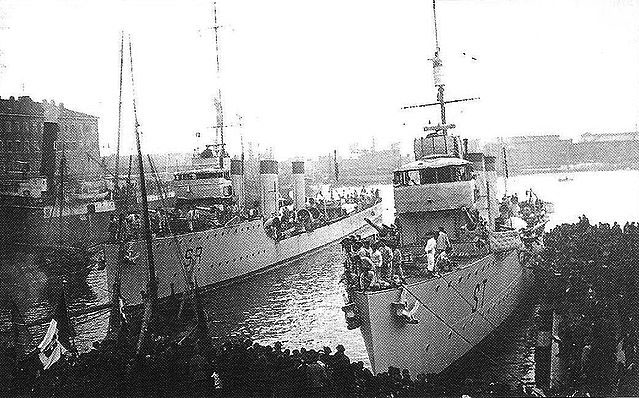
Laid down in February 1916, launched on June and completed in July 1917, Stocco joined her squadron on 9 July 1917, started operations from venice, northern Adriatic. She took part in the interception raid on 13-14 August 1917 with her sisters Orsini, Sirtori, Acerbi against a raid by DDs and TBs but the chase soon stopped. On 29 September she was part of a raid led by 10 Caproni bomber against Pola when recalled when Ferrara was attacked. Sent to Rovigno there a brief evening clash. On 16 November 1917 she was sent to support a repelling action against Wien and Budapest bombarding Cortellazzo. On 28 November she was in another interception for a foce attacking the mouth of the Metauro. The chased stopped near Cape Promontore.
On 10 February 1918 she sailed to Porto Levante with Aquila, Sirtori, Acerbi, Ardente, Ardito under captain Pietro Lodolo for the “Buccari prank”. On 13-14 May she was part of the first failed raid of Grillo against Pola and all the others including one of 13 May which saw Grillo sank.
On 1-2 July 1918 she took part in a simulated landing diversion to aid the Italian advance and clashed briefly with Csikós and Balaton after an air attack on Venice. Stocco was damaged in that clash with many dead and injured in her crew, and a fire, also evading two torpedoes, breaking formation. She was assisted by Acerbi.
On 4 November 1918, Stocco, Sirtori, Acerbi and Orsini left Venice together with BB Emanuele Filiberto for Fiume (see above).
On 14 September 1919, she was back at Fiume with Admiral Casanuova on board to restore order after a mutiny on Dante Alighieri, Carlo Mirabello and Abba, Nullo led by Gabriele D’Annunzio.
On 11 October 1919, Stocco stopped and force F 16 to return to Venice, trying to join D’Annunzio legionaries in Fiume. On 29 April 1920 while sailing off the coast of Fiume she received 25 shells from a coastal battery in the hands of legionaries.
In 1920 she was overhauled. Later she served in the Upper Adriatic and Dalmatia until 1921, notably links with Trieste, and was based in Brindisi, and Saseno briefly. She joined the II Destroyer Squadron in 1923 and until March 1927 served between Taranto and Messina, also training in the Tyrrhenian Sea. In 1928 she was in the Special Division, Adriatic and formed with the Sirtori and Acerbi, TB Ippolito Nievo (Pilo class) the X Destroyer Squadron with the IX led b the scout Aquila, in the 5th Flotilla, scout Brindisi making a cruise in the Dodecanese.
She was relocated to Tripolitania (Libya) and on 28 September 1930, carried 31 leaders of the Senussi revolt arrested in Cyrenaica to Ustica.
In 1933 she was relocated to La Spezia, IV Torpedo Squadron. In 1932 her pennant was changed to “SO”. In 1934 she was a target tug for the I Squadron until 1940.
The Second World War
On 10 June 1940 she was in the VI TB Squadron in Taranto. Sghe escorted ships between the southern Adriatic and Gulf of Taranto, assigned to the V TB Group, then IIIrd in Brindisi.
From 5 September 1940, she joined Maritrafalba command for convoy escort. On 5 October she escorted the steamerss Alfio, Poseidone, Agata and Carmela from Brindisi to Valona.
On 24 October she left Brindisi for Durazzo escorting the Piero Foscari and Filippo Grimani. On 24 October, she left Bari to escort Artiglio, with 144 motor vehicles to Durazzo. Other similar missions went on in November with nothing of note.
On 31 January 1941, Stocco however hit a mine laid three days earlier by HMS Rorqual between Fiume and Susego. This broke her in two, however her bulkheads held and she remained afloat. Both sections was later towed to Fiume between 10 and 27 February. She was fully repaired and resumed activity on the Albanian routes.
On 16 March 1942, she took part in operation «Sirio» with the TBs Pallade and Generale Marcello Prestinari, DDs Ugolino Vivaldi, Lanzerotto Malocello, Emanuele Pessagno and Nicolò Zeno escorting the Vettor Pisani from Naples to Tripoli alongside the german steamer Reichenfels and Assunta De Gregori by other shops and covered afar by Emanuele Filiberto Duca d’Aosta, Scirocco and Grecale. They delivered 36 tanks, 278 vehicles, 13,124 tons of supplies and 103 soldiers.
She also escorted convoys from Patras to Brindisi, Bari to Valona, Bari to Durazzo, Durazzo to Bari. She was modernized in 1942, gaining DCTs. In 1943, based in Brindisi, she escorted convoys to Dalmatia with the III Torpedo Group with Missori, Sirtori, Abba, Cosenz and Dezza. Next she had missions from Brindisi to Corfu, Brindisi to Corinth, Valona to Bari, Patras to Corfu and Bari and was of Dalmatia, on the evening of 8 September 1943. She was sent to Corfu to support the Italian garrison, seeing Sirtori out of action by Stukas. Stocco heded back to Brindisi and repelling en route four German aircraft. On 24 September she left Brindisi to escort to Santi Quaranta the steamships Dubac, Probitas, Salvore, to evacuate the «Perugia» Division in Albania but she was detached to counter a German landing in Corfu, repeatedly attacked by Stukas, shoot down one but hit. She later sank west of Corfu (other source, scuttled by the crew). They found refuge, hidden by inhabitants in the islet of Marlera and later managing to reach Brindisi by sailship on 30 October. In WW2 she performed 174 war missions (including 157 escorts) covering 69,000 nautical miles.


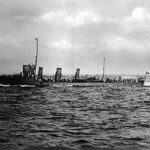
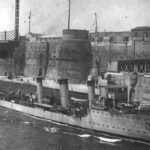
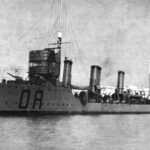
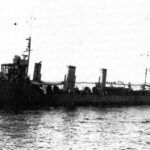
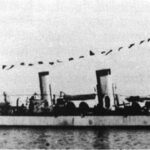
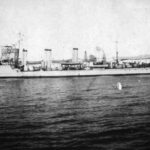
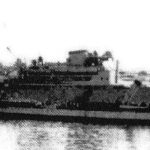
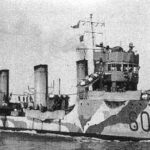
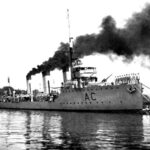
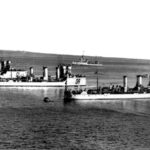
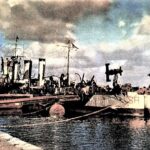
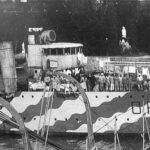
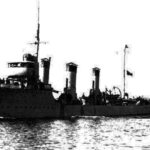
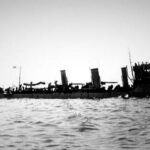
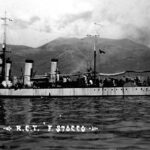
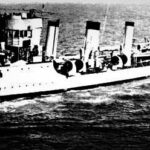
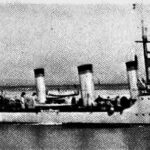
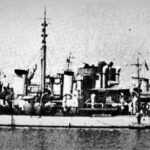
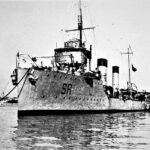
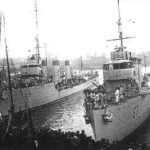
 Latest Facebook Entry -
Latest Facebook Entry -  X(Tweeter) Naval Encyclopedia's deck archive
X(Tweeter) Naval Encyclopedia's deck archive Instagram (@navalencyc)
Instagram (@navalencyc)





 French Navy
French Navy Royal Navy
Royal Navy Russian Navy
Russian Navy Armada Espanola
Armada Espanola Austrian Navy
Austrian Navy K.u.K. Kriegsmarine
K.u.K. Kriegsmarine Dansk Marine
Dansk Marine Nautiko Hellenon
Nautiko Hellenon Koninklije Marine 1870
Koninklije Marine 1870 Marinha do Brasil
Marinha do Brasil Osmanlı Donanması
Osmanlı Donanması Marina Do Peru
Marina Do Peru Marinha do Portugal
Marinha do Portugal Regia Marina 1870
Regia Marina 1870 Nihhon Kaigun 1870
Nihhon Kaigun 1870 Preußische Marine 1870
Preußische Marine 1870 Russkiy Flot 1870
Russkiy Flot 1870 Svenska marinen
Svenska marinen Søværnet
Søværnet Union Navy
Union Navy Confederate Navy
Confederate Navy Armada de Argentina
Armada de Argentina Imperial Chinese Navy
Imperial Chinese Navy Marinha do Portugal
Marinha do Portugal Mexico
Mexico Kaiserliche Marine
Kaiserliche Marine 1898 US Navy
1898 US Navy Sovietskiy Flot
Sovietskiy Flot Royal Canadian Navy
Royal Canadian Navy Royal Australian Navy
Royal Australian Navy RNZN Fleet
RNZN Fleet Chinese Navy 1937
Chinese Navy 1937 Kriegsmarine
Kriegsmarine Chilean Navy
Chilean Navy Danish Navy
Danish Navy Finnish Navy
Finnish Navy Hellenic Navy
Hellenic Navy Polish Navy
Polish Navy Romanian Navy
Romanian Navy Turkish Navy
Turkish Navy Royal Yugoslav Navy
Royal Yugoslav Navy Royal Thai Navy
Royal Thai Navy Minor Navies
Minor Navies Albania
Albania Austria
Austria Belgium
Belgium Columbia
Columbia Costa Rica
Costa Rica Cuba
Cuba Czechoslovakia
Czechoslovakia Dominican Republic
Dominican Republic Haiti
Haiti Hungary
Hungary Honduras
Honduras Estonia
Estonia Iceland
Iceland Eire
Eire Equador
Equador Iran
Iran Iraq
Iraq Latvia
Latvia Liberia
Liberia Lithuania
Lithuania Mandchukuo
Mandchukuo Morocco
Morocco Nicaragua
Nicaragua Persia
Persia San Salvador
San Salvador Sarawak
Sarawak Uruguay
Uruguay Venezuela
Venezuela Zanzibar
Zanzibar Warsaw Pact Navies
Warsaw Pact Navies Bulgaria
Bulgaria Hungary
Hungary

 Bundesmarine
Bundesmarine Dutch Navy
Dutch Navy Hellenic Navy
Hellenic Navy Marina Militare
Marina Militare Yugoslav Navy
Yugoslav Navy Chinese Navy
Chinese Navy Indian Navy
Indian Navy Indonesian Navy
Indonesian Navy JMSDF
JMSDF North Korean Navy
North Korean Navy Pakistani Navy
Pakistani Navy Philippines Navy
Philippines Navy ROKN
ROKN Rep. of Singapore Navy
Rep. of Singapore Navy Taiwanese Navy
Taiwanese Navy IDF Navy
IDF Navy Saudi Navy
Saudi Navy Royal New Zealand Navy
Royal New Zealand Navy Egyptian Navy
Egyptian Navy South African Navy
South African Navy






























 Ukrainian Navy
Ukrainian Navy dbodesign
dbodesign